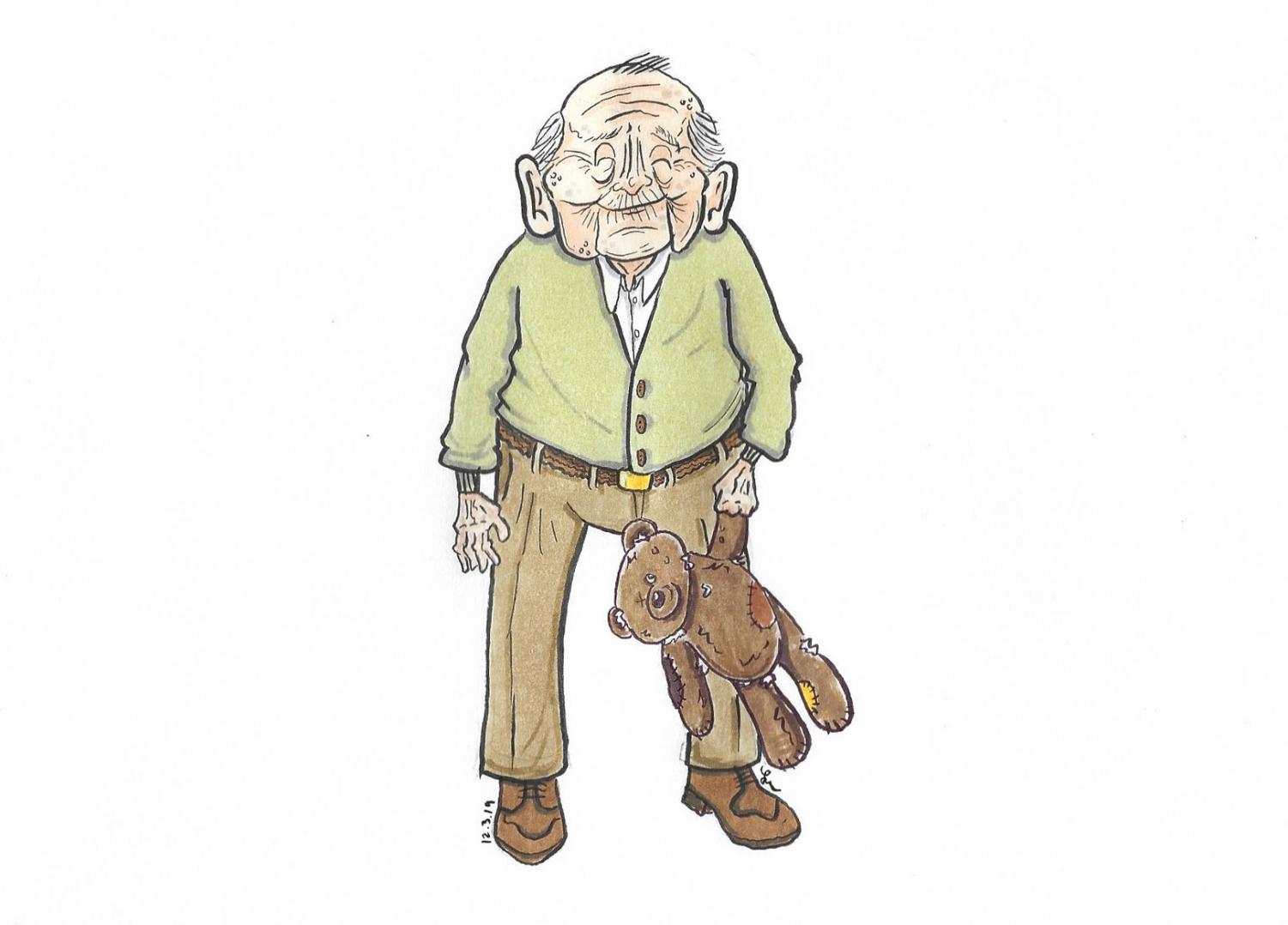A college graduate stands in front of her first car. With tears running down her face, she realizes it is time to part ways with her beloved vehicle. She has been through so much since she first bought it, and by letting the car go, she feels as though she is letting go of the memories attached to it.
This graduate, Dr. Marie de la Paz, grew up to be a psychologist and is now able to analyze and explain her attachment through a psychological lens.
“It was a test to all these memories. It is almost like I invested my identity in my car. I felt like this car was personified. It witnessed all of these things I had gone through my whole life,” de la Paz said. “It’s just a car, but it isn’t at the same time. I learned how to drive a stick shift in this car. It wasn’t handed down to me, I fully owned it, and it was my baby.”
She explained how, as humans, it is hard to let go of objects. Many are so eager to attach to something or someone because it is an innate instinct that has kept humans alive for millennia.
In a summary of John Bowlby’s “Theory of Attachment” published on Simply Psychology, “The behavioral theory of attachment [states] that the child becomes attached to the mother because she fed the infant.” Bowlby, a British psychologist, specializes in early childhood attachments and how they can play a role in development.
De la Paz built on his idea, arguing that it could be understood through an evolutionary lens. After all, caregiver’s instinct is to provide safety and security for their children. According to Simply Psychology, “attachment is adaptive, … it enhances an infant’s chance of survival.”
As attachment develops, it often presents itself in stressful situations. For example, many children use security blankets or objects to ease the stress of separation anxiety.
Jono Sison, a sophomore at Carlmont, has had his stuffed tiger, Bobby Boo Boo, since he was born.
“If you have anything for that long, you tend to feel connected with it, as you haven’t gone through a single event in life without it,” Sison said. “I have such a strong connection with Bobby Boo Boo because, in preschool, I didn’t have many friends. I was often bullied, so Bobby Boo Boo was my only friend during this time. I would bring him to school every day, and sleep with him during nap time.”
However, Sison emphasized that the waning need for such an object doesn’t neccessarily decrease it’s value.
“From preschool to now I, thankfully, have many friends, but that doesn’t mean Bobby Boo Boo is any less important to me,” Sison said.
Sison grew up with his stuffed tiger, which caused him to invest a large part of his identity in Bobby Boo Boo; however, unlike Sison, others can instantly bond to something simply because of the way it looks. This assignment of human qualities to non-living objects is called anthropomorphism.
“We think our cat is acting ‘sassy,’ that the stock market is ‘angry’ or ‘working to recover,’ and we ask our car ‘why it won’t turn on’ and call it a ‘rickety old man’ when it starts to stall,” said Leah Fesser, a journalist at Quartz and former writer for The Washington Post and The Atlantic.
In turn, the human brain is programmed to see and perceive human characteristics, even if the object isn’t alive.
It is common for people to associate a car’s headlights with a face, giving their vehicle a “personality.” A car’s “personality” might also come from the way it drives, its model, or its brand.
Charlie Thrift, a senior at Serra High School, had his Mercedes ML430 handed down to him from his brother and has been driving the car for two years now. Because of it’s origin and his relationship with the car, the vehicle holds a special place in his heart.
“I named him Gus because he is an old, big, and hard-working car. He reminds me of my grandpa, who had the car before me,” Thrift said.
Thrift considers his car as a member of his family and described nearly crying when his brother crashed it. Similarly to de la Paz, he associates many youthful memories with his vehicle.
De la Paz also holds on to objects that remind her of her late grandfather. For instance, she still keeps the cardigan that he used to wear to this day.
“For some reason, it was maybe the only tangible memory I have that he existed. I know we have pictures, but that is so two-dimensional, and it’s not the same. So, there are things like my grandpa’s cardigan that is so personal because it once touched his skin, so it is like he is still with me,” de la Paz said.
Even several years later, humans have the same tendencies towards what TedEd educators Christian Jarrett and Avi Ofer call the “endowment effect.” For example, most adults are reluctant to part from family heirlooms. To an individual with such an emotionally incentivized brain, a knit of cotton or wool can help them feel connected to lost loved ones. The feeling one gets from the physical sensation sparks a deep emotional connection.
According to Jarrett and Ofer, from a young age, humans are tricked into thinking that inanimate objects have a unique essence.
In an experiment reported on by the educators, children were offered an exact copy of a toy they were attached to in exchange for the original. However, the majority wanted to keep the original; they were often horrified at the idea of taking home an object other than that which was initially theirs.
When De la Paz said goodbye to the vehicle she cherished for much of her life, she exhibited something all humans have: the instinct to attach.
Ultimately, humans crave connection or material attatchment because it provdes them with a memory of the past. What was once a stress reliever from the first day of kindergarten can turn into something one can’t sleep without, and because humans are inherently yearn to form attachments with others, such attatchment is inevitable.
“I don’t understand why people get judged for naming their cars or sleeping with stuffed animals,” Thrift said. “I’m not embarrassed to be attached to something that represents such a big part of me.”





